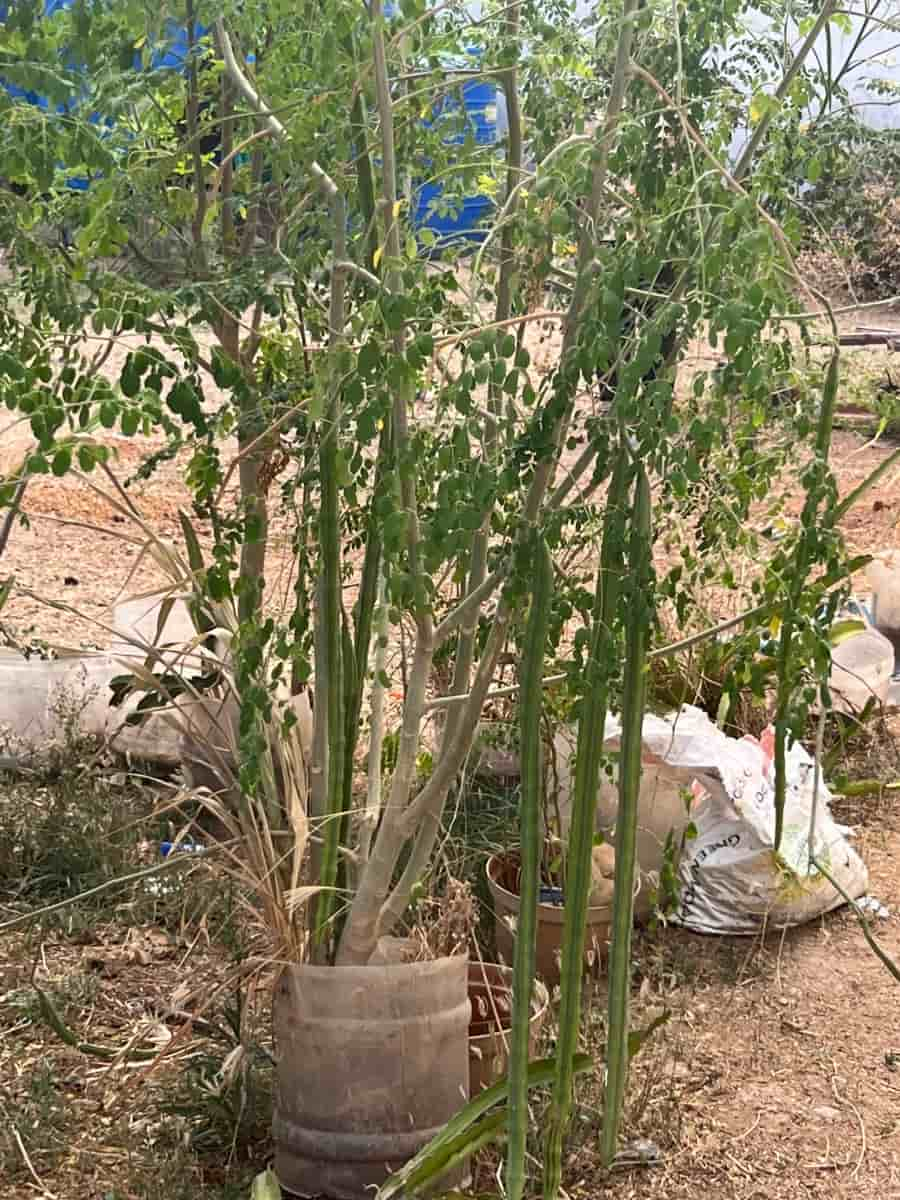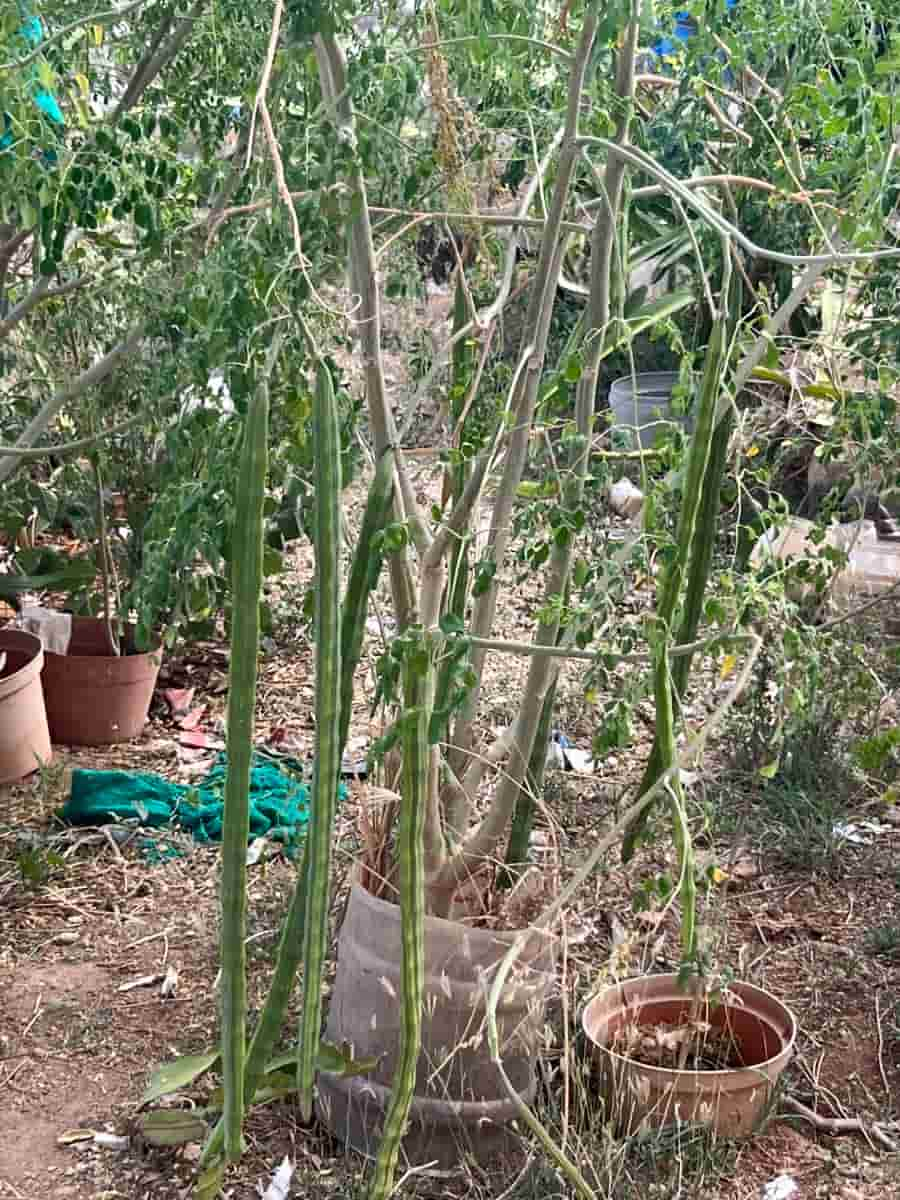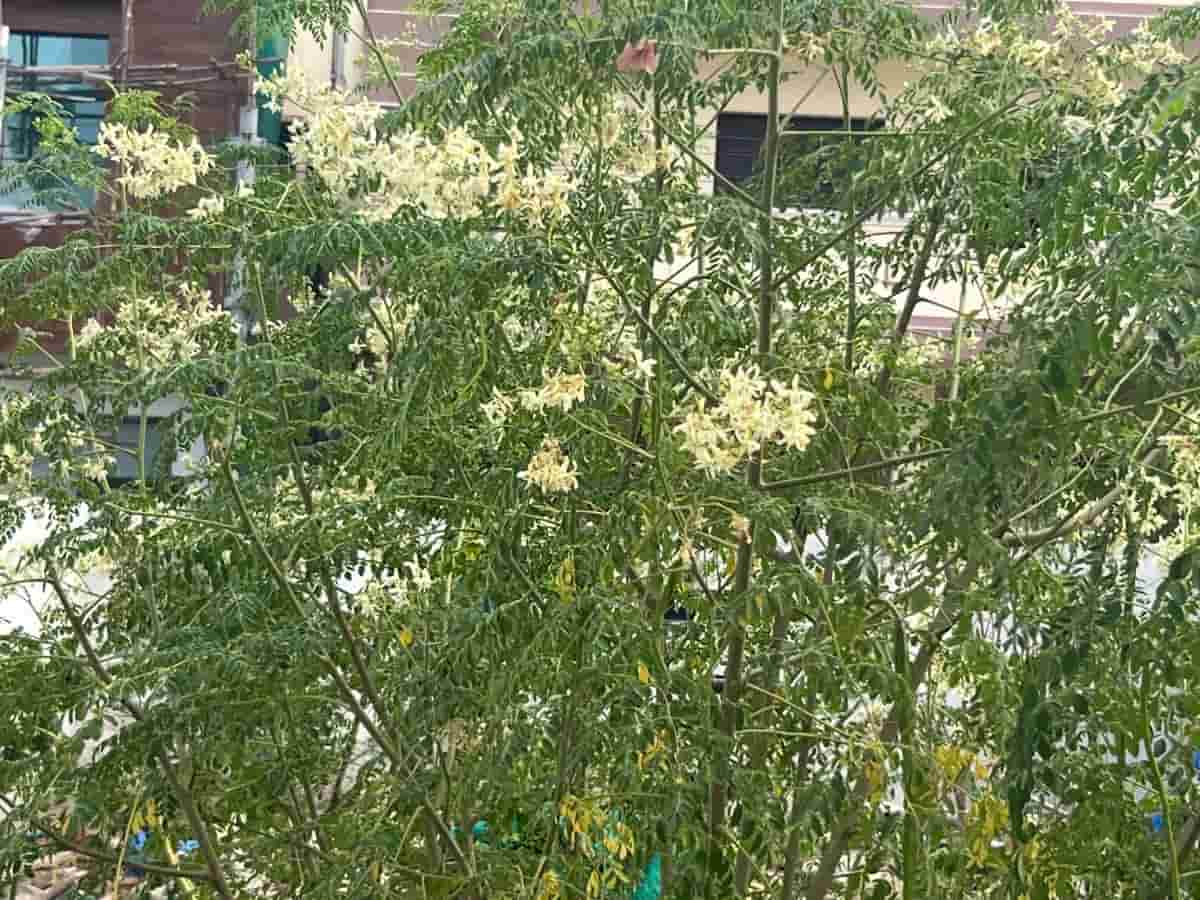Watering plays a crucial role in preventing the drying of Moringa pods. It’s essential to understand that Moringa plants, scientifically known as Moringa oleifera and belonging to the Fabaceae family, thrive on consistent moisture levels for healthy pod development. It is important to understand the role of water in the overall health and development of Moringa pods.

Optimal Watering Techniques for Moringa Plants
Optimal watering plays a vital role in keeping your plants happy and hydrated. When it comes to watering Moringa plants, consistency is key. Make sure the soil around the plant is evenly moist but not waterlogged. Water early in the day when temperatures are cooler to minimize evaporation loss. Directing water at the base of the plant helps prevent foliage diseases that can arise from wet leaves. Monitor the soil moisture regularly by checking a few inches below the surface. Adjust your Moringa watering based on environmental factors like temperature and humidity levels for optimal growth.
How Inadequate Watering Leads to Drying Moringa Pods
Insufficient watering is like leaving your favorite plant high and dry. Moringa pods, in particular, are sensitive to water stress. When the roots of the Moringa plant don’t receive enough water, they struggle to supply moisture to the developing pods. Inadequate watering disrupts the pod’s natural growth cycle, leading to poor quality and reduced yield.
The lack of hydration affects not only the appearance but also the nutritional value of these valuable pods. To prevent this from happening, it’s crucial to maintain a consistent watering schedule for your Moringa plants. Watch on soil moisture levels and adjust your watering routine accordingly to ensure healthy and vibrant pods.
Signs of Water Stress in Moringa Pods
When it comes to Moringa plants, it is crucial to look for signs of water stress in the pods. The common indicator is the wilting of leaves and pods, which appear droopy and lacking vitality. The color of the pods may also change, becoming dull or discolored when not receiving adequate moisture.
Additionally, dry and crispy edges on the leaves can signal that your Moringa plant is experiencing water stress. If you notice a significant decrease in pod production or smaller-sized pods than usual, it could be due to insufficient watering. Another sign is leaf drop – when the plant starts shedding leaves prematurely as a response to dehydration. Please pay attention to these signals from your Moringa plant, as they can help you adjust your watering practices accordingly for healthier pod development.
Best Time to Water Moringa Plants for Pod Health
The best time to water your Moringa is in the early morning or late afternoon when the temperature is cooler. This helps prevent evaporation, where the roots can access it efficiently. Watering during peak sunlight hours can lead to quick evaporation and potential stress on the plant due to heat. By choosing the right time, you ensure that your Moringa plants receive adequate moisture without causing unnecessary strain. Observing your plants’ response to watering at different times of day can help you determine what works best for their specific needs.
In case you missed it: How to Grow Moringa/Drumstick from Seed to Harvest: Check How this Guide Helps Beginners

Watering Frequency: How Often Should You Water Moringa?
Watering is crucial for the health of your Moringa plants, especially when it comes to preventing drying pods. These plants thrive in well-drained soil, but they still need consistent moisture to produce healthy pods. In general, Moringa plants prefer regular watering rather than sporadic deep watering.
Aim to water the Moringa plant deeply but infrequently to encourage root growth and avoid waterlogging the soil. Depending on your climate and soil type, you may need to adjust the frequency accordingly. Keep an eye on the weather conditions and check the soil moisture levels regularly.
The Importance of Consistent Moisture for Moringa Pod Development
Consistent moisture is crucial for the development of Moringa pods. These nutrient-packed pods require adequate water to grow and thrive. Without consistent moisture, the pods may dry out prematurely, affecting their quality and nutritional value. When Moringa plants receive regular watering, they can produce healthy and vibrant pods that are full of essential nutrients. Inconsistent watering patterns can lead to pod deformities or stunted growth, impacting both quantity and quality.
Impact of Overwatering on Moringa Pods
Overwatering can be just as detrimental to Moringa pods as underwatering. When the soil is constantly saturated, it restricts oxygen flow to the roots, leading to root rot. This condition can prevent proper nutrient absorption and weaken the plant’s overall health. The delicate balance of hydration in Moringa plants is crucial for optimal growth and pod production.
To avoid overwatering, ensure proper drainage in your planting area, and do not water your Moringa plants too frequently. By understanding the negative impact of overwatering on Moringa pods, you can take proactive steps to maintain a healthy watering routine that promotes robust plant growth and abundant pod yield.
Using Mulch to Retain Soil Moisture for Moringa Plants
Mulch protects your Moringa plants by shielding the soil from extreme temperatures and locking in precious moisture. It’s like giving your plants an extra layer of defense against drying out too quickly under the scorching sun. By spreading mulch around the base of your Moringa trees, you create a barrier that helps retain soil moisture by reducing evaporation.
Not only does mulch help with moisture retention, but it also suppresses weed growth that competes with your Moringa plants for water. Choose organic mulch like straw or bark chips as they break down, enriching the soil with nutrients that benefit your Moringa’s overall health.
Drought-Tolerant Moringa Varieties: Do They Need Less Water?
While these varieties are indeed more resilient to water scarcity, this doesn’t mean they can thrive without moisture. There are several excellent options, including PKM-1, the ODC3 variety, MO-86, and Coimbatore 1. Drought-tolerant Moringa plants still need adequate watering during critical growth stages, especially when the pods are forming. Even though they might be able to handle periods of reduced irrigation better than other types, consistent moisture remains essential for healthy pod development.
In case you missed it: Moringa Planting and Growing FAQs

Tips for Maintaining Soil Moisture in Different Climates
Choosing the right type of mulch is important in Moringa yield. Organic mulches work well in retaining moisture in both hot and cold climates. Another tip is to water your Moringa plants early in the morning or late in the evening when temperatures are cooler. This helps reduce evaporation and allows the water to penetrate deeply into the soil, where roots can access it efficiently.
Additionally, planting Moringa trees strategically where they can receive some shade during peak sunlight hours can help reduce water loss through transpiration. Regularly check the soil moisture levels by simply feeling the top layer of soil with your fingers. Adjust your watering schedule accordingly based on how quickly the soil dries out in different climates. With proper care and attention to watering practices, you can enjoy an abundant harvest of nutrient-rich Moringa pods from your garden.
- The Role of Watering in Preventing Drying Moringa Pods
- Best Liquid Fertilizer for Flowering Plants
- How to Set Up an Efficient Watering System for Home Garden
- How to Mulch Tulip Bulbs: Expert Tips Best Tulip Blooms
- Common Problems with Potted Figs and How to Solve Them
- How to Prevent Flower Drops in Pomegranate Trees: Effective Tips
- How to Boost Ridge Gourd Flowering and Yield: A Beginner’s Guide
- Effective Pollination Techniques for Maximizing Gourds Yield
- Composting Techniques for Manure in Home Gardens